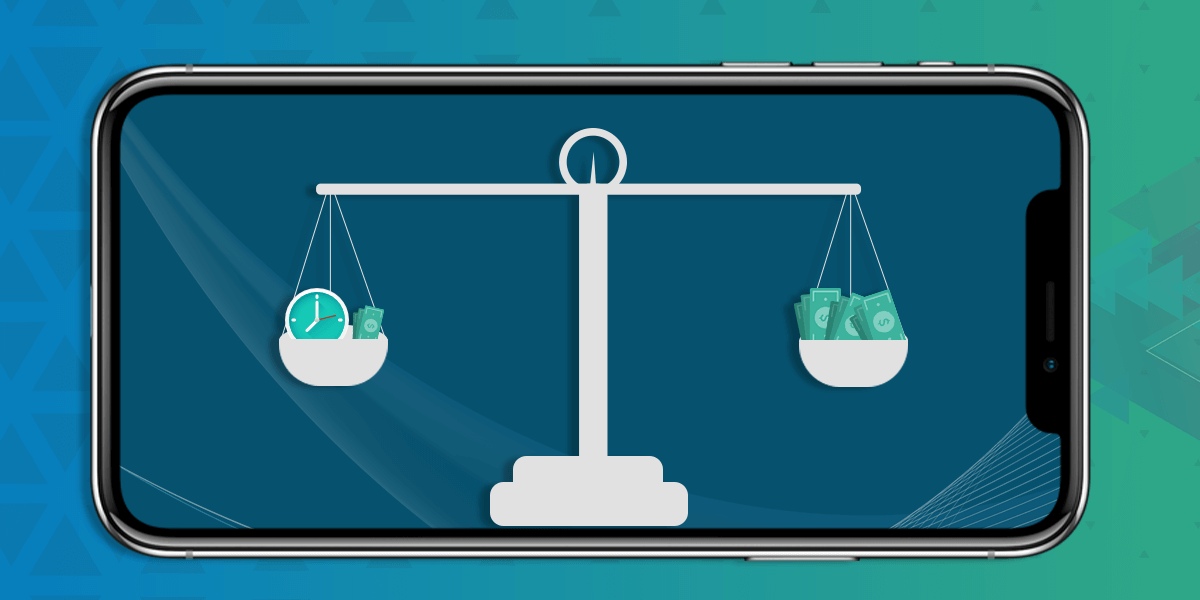Fixed Cost or Hourly Rate: Which Pricing Model is Better for Your Project?
- Mobile
- October 19, 2018
Whenever a business entrepreneur plans to develop a mobile or any web application, he usually takes into consideration a number of vital factors. The first aspect to arrive in the scenario is the app idea with clearly defined features.
However, most of the clients today are inquisitive to know how much it would cost to develop a mobile app or a web app. They want to pre-define their budget estimate.
But to tell you the core truth, it is very difficult for any App Development Company or Developers to provide you with an exact figure of app development cost.
You must know that the price depends on a number of variable elements such as choice between freelancer or in-house agency, selection of the platform; Android or iOS, hybrid or native, the development team and its particular location, technical aspects, UI and UX designs, testing or quality assurance and the cost of app publishing etc.
In addition, if you are developing an MVP of your app or going for some additional features, you have to pay more.
Have you ever considered or heard about the different pricing models for determining the cost of app development? Most clients are actually aware about it as they undertake an extensive research before getting in touch with the professional App Development Firm.
Read also: What are the Vital Factors that Influence the Cost of App Development
If you look at a scenario of the App Development Industry, most of the companies basically follow a dual pricing model:
- Fixed Pricing Model
- Hourly or the Time and Material Model
Here, we would be analyzing the key differences between the two popular models and in which case each of these would be ideally suitable for your project.
The Fixed Pricing Model
The fixed price model as the name implies comes with a fixed budget estimate with very little or almost no scope of any alteration in the project. The cost of the project and the timeline is agreed upon in advance.

In this model, generally, the app idea, implementation of the features and functionalities, choice of the specific platform is all pre-defined in advance.
The development team as well as the client undergo a mutual understanding with crystal clear ideas as well as the end results.
The client is pretty sure about the success of the app and so he’s prepared to take the risk. Another important point is usually in this type of pricing model. The project is not complex with a small budget estimate. The task is simple and you don’t require a big team to accomplish it.
You have to necessarily remember the fact that no changes, not even a single one is allowed once the terms and conditions are agreed upon and the agreement is signed under any circumstance. Therefore, you should be very clear about what features you want to integrate in the app.
However, the downside of this model is that you are giving more preference to your budget in comparison to quality of the project. So, you also have to prepare to take the risk and face failure if the app idea does not click according to your expectations.
But the app development companies are offering a sort of financial ‘airbag’ to deal with the wrong, which is included in the app pricing.
Essential Features of the Fixed-Cost Agreement
- The budget or the cost of developing the application is decided in advance and there is a mutual understanding between the developer and the client. It does not change and remains static.
- The development team is well acquainted about how to mould the project and bring it in perfect shape. They know what features and functionalities to add and how to go about designing an app icon and UI designs.
- Even the deadline of the project is fixed. The project has to be completed within the specific timeline.
- Under no circumstance you are allowed to ask for any change in the project.
- There is risk element involved in this model due to the deadline factor.
Conditions when Fixed Pricing Model will Suit your Needs
- You need a simple app with not so much of complex tasks involved to develop it.
- You have a tight budget in hand and you are left with no other alternative.
- You are planning to develop a Minimum Viable Product or App Prototype to test the validity of app’s idea.
- You have a crystal clear idea of app with reference to adding of features and choice of platform etc.
The Hourly Rate Pricing Model
The hourly rate is also known as the Time and Material Model. Here the mantra is pretty much straightforward. The cost of the project is determined by per hour basis, which varies from region to region and from one company to another.

The cost of the app would be the total number of hours worked by the app development team to complete the project.
For instance, if the company charges $25 per hour and the total hours for completing the app development is 600, then the price would stand somewhere around $25×600, which is equal to $15,000.
The hourly rate or the Time and Material Model is more preferable for clients who really seem to take a great interest in what’s going behind the scenes.
Due to their flexible nature, you are most welcome to give your own verdict and also valuable suggestions on improving the quality of the project.
You can make changes during the development process and go for additional features if you find the necessity. Therefore, it offers the customers a much wider scope where they can get a desired product in accordance with their requirements.
Essential Features of the Hourly Rate Model
- The pricing model depends on the working hours of the developers and rate they charge for their effort
- The cost of the project is not fixed. It may exceed with the progress of development or can even decrease as well if you want to remove any unnecessary feature.
- Not only the cost, but the timeline of the project is also flexible. The developers don’t have a ghost of time hovering their head always.
- The client can get involved in the project upfront and provide his valuable inputs from time to time like addition or removal of any feature.
Cases Where the Time-and-Material Pricing Model is Successful
- The hourly-rate approach will definitely suit your needs if you don’t have a clear app idea and you are not sure about validating it.
- The developers are working a complicated project, which requires subsequent testing and client approval.
- When you directly want to get involved with the project and desire to know how the developers are proceeding with the given task.
Fixed Cost Vs Hourly Rates: The Final Call
Well, we discussed in detail about both the popular pricing models that almost all the App Development Companies follow today when catering to any project.
It can be said that both have their pros and cons. And it literally depends on the specific requirements and budget estimate of the client as to what he chooses.
If you are choosing fixed cost model, you are compromising with the quality of the app and not getting any scope for changes. Alternatively, if going for the hourly rate, your cost would definitely be on the higher side but you can get the product as desired.














